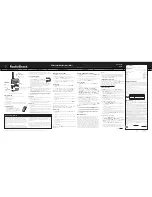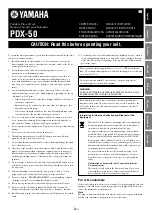
STEP 2 – STARTING UP RADIO SENSORS
AND STARTING SEARCH OF SENSORS BY
MAIN UNIT.
Note : The radio sensor installed outside must
always be named as sensor no 1.
Unscrew the battery compartment cover and remove it.
Before inserting batteries, select the number that will be used
for this sensor (remember No. 1 is for outside sensor) by moving
the button to the right for No. 1, to the centre for No. 2, to the
left for No. 3.
These radio sensors use 3 batteries of AAA type. Insert them by
strictly conforming to the polarity indicated at the bottom of the
compartment; do not close the cover at this stage.
Do not change the No. of a sensor after bringing it into
service. If so desired, start the operation all over again.
Press the
key of the main unit, then select Synchro by
pressing the keys,
then press
.
The device then starts a specific search of all radio sensor
transmission received for 2min 10s.
It is recommended to reset the sensor immediately
after starting the synchronization since the sensor then
transmits 12 times during 60s, which facilitates its
detection by the main unit during the synchronization
operation.
This procedure can thus be used to check if the location of a
sensor allows it to be received by the main unit.
When a sensor is powered on (or after a reset), it issues a special
indication of its identification number. This in turn “locks” the
main unit on the received sensor(s).
Make sure the seal is carefully put back in the slot provided
before screwing up the battery compartment cover of the
sensor. Do the same when you change batteries later on.
Put the cap on the sensor. Carefully fix the wall fixing kit on wall.
It is essential to name the radio sensor you want to
install outside as No. 1 and put it northward or under
"shelter" so that it will never receive direct sunlight (as
this would completely distort the relative humidity and
temperature measurements and distort the result of the
multicriterion weather forecasts, the world exclusive
feature of your EASY METEO).
43
TECHNICAL
READING
Start-up
PRACTICE
DESCRIPTION
TFA_ANGLAIS 21/04/05 14:44 Page 43
















































